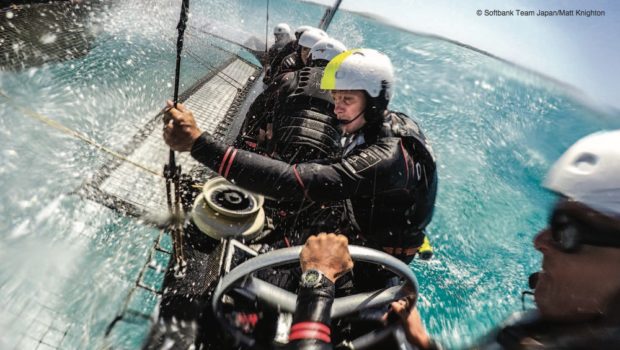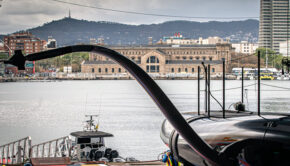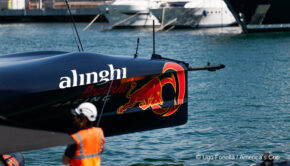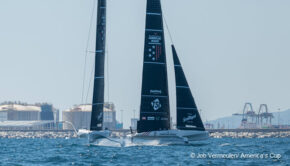Nail the Start, or Else
Published on August 21st, 2016
By Dave Reed, Sailing World
In the crazy new world of America’s Cup racing, the start is it. Nail it, or else.
As a few challengers and the defender train on Bermuda’s Great Sound with their foiling test platforms, the checklists are long and technical, but there remains a focus on a match race’s most essential skill: winning the start. All the data in the world can’t control when and how quickly six men collectively pull the trigger. It’s something they must drill into their muscle memory until they get it right: get on the foil at full speed, and break away for Mark 1.
“Prestarts will be very exciting in the next Cup,” says SoftBank Team Japan’s Chris Draper. “The boats will be much closer in speed, so there will be more passing and more maneuvers, [and] crew work will be important. They’re highly maneuverable boats and exceptionally fast downwind, but the starts, as always, will be critical.”
How does an America’s Cup team perfect such a fundamental part of the race?
“One thing Oracle and Emirates Team New Zealand developed really well in the last Cup was a box that basically helps in their prestart maneuvering,” Draper says. “In the monohull days, you had guys who could look at the box, extrapolate the data, and quite easily determine how long they have to get to the line and how much they have to burn. The boat would hit the line exactly on time. It’s so much harder in these boats (AC45 Turbos) because you have so many other variables. If you don’t make the foiling jibe, your time to the line changes dramatically.
“With Luna Rossa (Italian challenger in the AC35), we didn’t have time to develop a starting package, so we were just using human input and our eyes. At 40 knots, if you’re one second off, it’s a huge difference. Now, in Bermuda, we’re building up our data, we have a nice starting package, and we’re getting to use it, but then we start adding in other things. If it’s 10 knots [of wind], it takes us longer to get onto our foils, for example, but if it’s 18 knots, we can pop up effortlessly and be at target speed very quickly. If you’re not foiling, the other guy is going three times faster.”
What are the most effective drills?
There’s no substitute for doing starting drills against other boats and teams. When you’re slow in the prestart, you’re a duck, so we know we can never be too good at the boathandling. If our boathandling is good, we can keep it ripping the whole time, making it easier to attack and making it harder for the other boat to defend. – Full Story.









 We’ll keep your information safe.
We’ll keep your information safe.